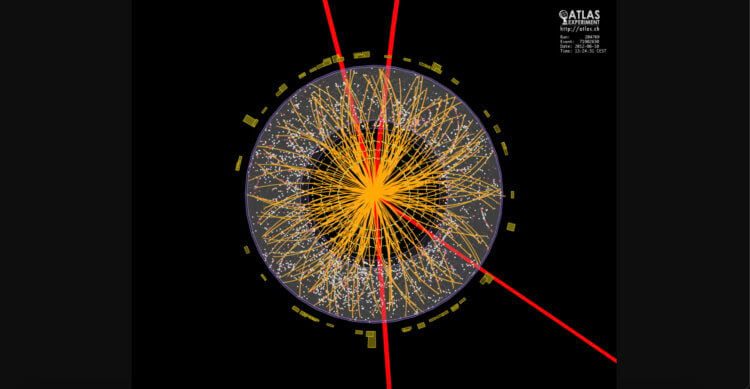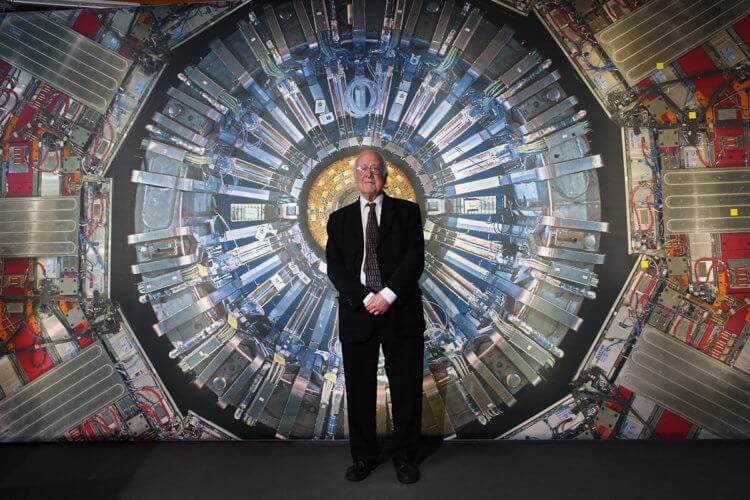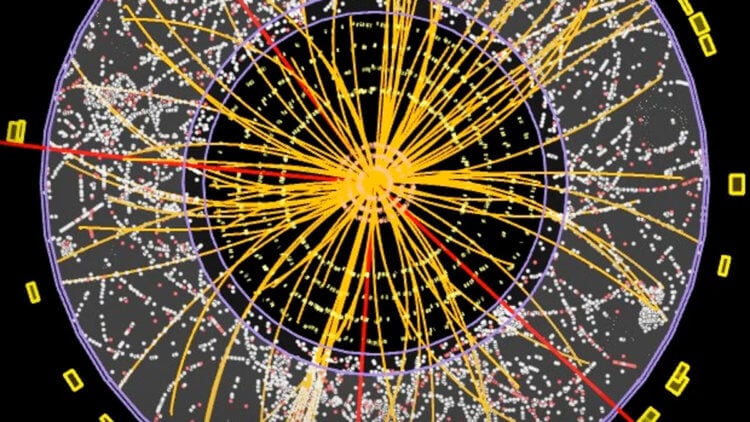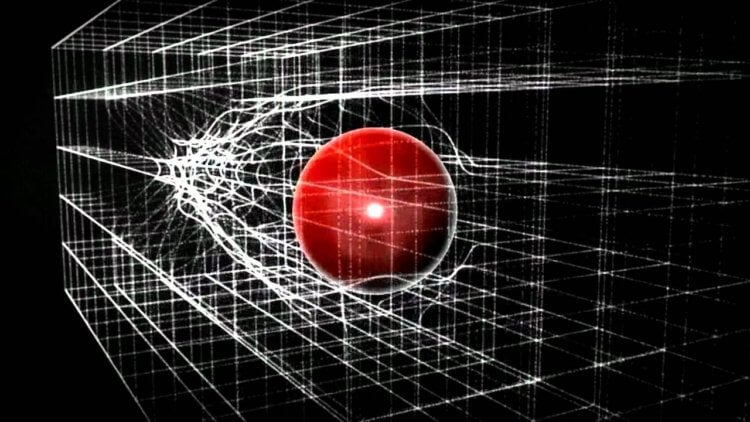In 2012, scientists reported one of the greatest developments in quantum physics—the discovery of the Higgs boson, the fundamental particle that carries the force of the Higgs field and is responsible for imparting mass to other particles. The existence of the Higgs field was first proposed by physicist Peter Higgs in the mid-sixties (both the field and the particle are named after him). 2024, alas, was the last year in the life of this outstanding scientist – on April 8, Peter Higgs died at his home in Edinburgh at the age of 94. His unprecedented legacy, however, continues to have a profound impact on the future of particle physics like no other discovery before it. Moreover, if current measurements of the Higgs boson are correct, then the Universe is unstable in its current state. This, in turn, means that we will have to reconsider all existing knowledge about both space and particle physics. Well, the new discovery, which we will discuss in this article, only adds fuel to the fire.

The Higgs boson is a fundamental particle that was discovered only 12 years ago. Image: assets.newatlas.com
The discovery of the Higgs boson by the joint efforts of ATLAS and CMS played a critical role in unlocking the secrets of the Higgs field and its potential. Many scientists believe that «New Physics» just around the corner.
The Higgs Legacy
English physicist Peter Wade Higgs was born in 1929. At that time, the understanding of matter and the Universe was completely different, and the leading model of matter stated that there were only three fundamental indivisible particles – protons (found inside atomic nuclei), electrons (surrounding protons) and photons (particles of light responsible for electromagnetic interaction).
An amazing revolution took place during Higgs's lifetime, culminating in the creation of the Standard Model of Particle Physics– the most successful system in history for understanding the structure of the Universe. However, Higgs' path to one of the greatest discoveries in the history of science was thorny. The physicist has been waiting for more than half his life for confirmation of his theoretical predictions.

Peter Higgs is a British theoretical physicist and professor at the University of Edinburgh. Nobel Prize winner in physics. Image: dzeninfra.ru
Read also: New elementary particles discovered. Why is this important?
The idea of the existence of a particle capable of imparting mass to all other particles was voiced by Higgs in 1964, but its existence was finally confirmed only in 2013 at the Large Hadron Collider. In the same year, the British scientist was awarded the Nobel Prize in Physics, and the particle named after him became world famous.
CERN, the European organization for the research of elementary particles, announced the discovery of the Higgs boson with great fanfare. However, Higgs himself seemed embarrassed by this and always emphasized that many other scientists contributed to the theory and voiced similar ideas, the obituary says.
The first Higgs paper was published in 1964 in the journal Physical Review Letters, which reported on a new type of massive boson (a type of subatomic particle). At that time, other theorists were working in the same direction, but the now famous «God particle» then existed only in theory.

Higgs used mathematical ideas about symmetry—and how it can be broken—to explain how massless particles can acquire mass. Image: www.cnet.com
Recall that the Higgs boson is related to the Higgs field, which gives mass to other particles such as electrons and quarks, as reported by the Higgs in 1966 . If the Higgs field had been discovered then, scientists would have proven that the standard model is a consistent theory of nature. The search for the Higgs boson, however, has proven to be an extremely difficult task. The scientist himself believed that this issue would not be resolved during his lifetime.
Do you want to always be aware of the latest discoveries in the field of physics and high technology? Subscribe to our channel on Telegram – so you definitely won’t miss anything interesting!
Unique properties of the «particle of God»
So, as we know today, the universe is based on the unique properties of the Higgs boson. Like the solid, liquid and gas states of matter, the Higgs field corresponds to the phase of the Universe, which can be determined by measuring the interactions of the Higgs boson with other particles.
In the decade since its discovery, many of these interactions have been discovered in TANK. These results raised new questions. The stability of the Universe—its ability to persist in its current state more or less forever—seems to depend on the mass and interactions of the Higgs boson.

The Higgs field interacts with atomic subparticles. Image: media.licdn.com
If the current measurements of this particle are correct, the Universe is simply unstable, which means that at some point it could change into another form. The answers scientists are searching for today may prove the Standard Model wrong.
Physicists also want to understand whether the Higgs field really explains all the masses of elementary particles, as the Standard Model predicts. As for the rare decay of Higgs bosons, which we previously talked about, researchers are not yet able to find out what other particles they decay into.
To finally understand the intricate interweaving of subatomic particles, scientists from Europe, the USA and China are working on the construction of new elementary particle colliders focused on studying the Higgs boson. The legacy of this outstanding scientist will be the program of experimental particle physics of the 21st century.

Peter Higgs is a man from another era. Image: habrastorage.org
It should be noted that Higgs was a physicist from a different era. Today, it is almost impossible to imagine that someone with his track record would be able to stay in academia – he published only a few papers, almost all of which he wrote alone. This is because the modern academic environment is built on fierce competition, and scientists are forced to publish work as often as possible.
It is difficult to imagine that in the current conditions I will have enough silence and peace to do what I did in 1964… I wouldn't get an academic job today… I don't think I'd be considered productive enough,” Higgs said in a 2013 interview.
< h2> Symmetry and new experiments
Since scientific discoveries (and especially breakthroughs) take time, it is somewhat premature to talk about a complete revision of our understanding of the structure of the universe and the Universe. But there is still a reason to revise the Standard Model: the Higgs boson is just one of the results of «spontaneous symmetry breaking» Higgs fields, which means that other similar bosons may exist.
These additional subparticles can interact with each other and with the Higgs boson. If their existence can be confirmed experimentally, then scientists will probably be able to explain the imbalance of matter and antimatter in the Universe.

The universe is shrouded in mystery. Image: symmetrymagazine.org
Don't miss: What is the Higgs boson and why scientists wanted to discover it
Recently, scientists from the ATLAS collaboration published the results of their search for two new Higgs bosons – X and S – that could interact with the standard model Higgs boson (H). It is assumed that the S boson decays into b quarks, while the H boson decays into photons.
Thus, the constant masses of these decay products can be used to restoration of the masses of the corresponding bosons, write the authors of the scientific work.
Since the physicists don't know the masses of the hypothetical Higgs bosons, they turned to a parameterized neural network (PNN) – a method that allowed them to not only study the range of X and S masses in great detail, but also get a clear idea of the masses of the new bosons, if any. found.

Local observed value of excess of standard model background processes as a function of masses (m_X, m_S). Image: ATLAS Collaboration/CERN
Of course, all of the above is extremely complex, however, looking into the future
the models explored in the new analysis remain promising opportunities for uncovering new physical phenomena beyond framework of the Standard Model. The data collected during the third run of the LHC and further work of the collider will shed even more light on both the Higgs bosons and the mysteries of the Universe.